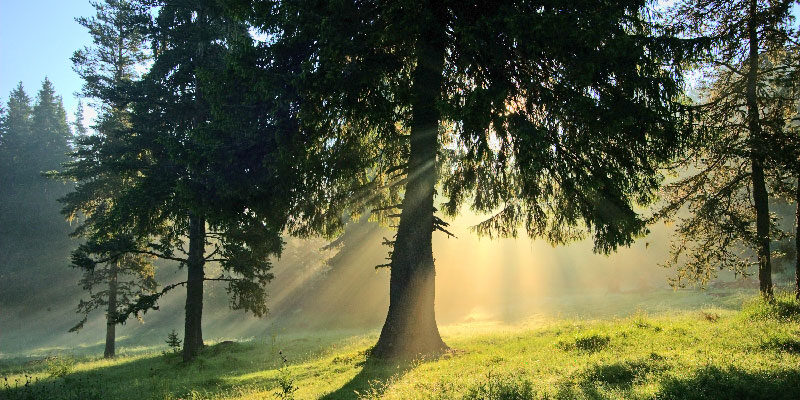Tree of Life – Level 1, Lesson 7: Zoroastrianism
Zoroastrianism is a system of religious thought brought forth by the teacher Zarathustra (in Greek Zoroaster) in ancient pre-Islamic Persia eleven centuries before the birth of Jesus Christ. The area to which this system was given was the Middle East. Zoroaster, as all great teachers, tied together many of the religious practices and beliefs of his era.
After the pre-diluvian (pre-flood) period man found the utilitarian properties of fire, he began to attribute the power and force of a Deity to it, because at that time, he could not yet conquer it. Through his learning about fire, or appeasing the deity, he found he could master it for practical uses. But, he also found he could use it for evil. It seems that this is what happened when Zoroaster was born.
Zoroaster (meaning, “tormenting the camels”) was born of a fifteen year old virgin through an immaculate conception. She was touched by a shaft of light which planted the seed within her. There are many stories about the boy’s precocity, for he had an incredible intellect and a strong moral repugnance against the superstition, cruelty, and deception of the time.
One story relates how the priests, who practiced black magic, took the child, knowing of his divine mission, and put him in the flaming coals of the altar fire. When his parents came to rescue him, they found him happily playing among the coals with the flames.
It was Zoroaster’s mission to correlate the true teachings of the Laws of Creation with his times. He was, like the Master Jesus, to break down an old social order with the truth of Creation and bring about a new social order of God.
Zoroaster taught that Fire was the physical manifestation of the Light force, called God. Darkness was not of God, and was, therefore, evil. The God of Light was the God of Love from whom all life comes.
Zoroastrianism has been called the “Religion of Ethical Dualism.” This is because the whole history of this planet is seen as a contest between the forces of good and evil. The forces of Good are led by Sharamazda or Ormuzd (the “Wise Lord”) and his forces called Amesha Spentas (“Immortal Holy Ones”) which personify six fundamental virtues: 1. Good Mind 2. Perfect Righteousness 3. Wished of a Kingdom 4. Earthly Harmony 5. Salvation and 6. Immortality. These angels and lesser deities are called “Worshipped Ones.” These include the spirits of Fire, Air, Water and Earth. The forces of evil are led by Ahriman. They are not as well disciplined.
The history of the world is divided into four periods of three thousand years each. The first period is one of spiritual existence created from Ormuzd’s mind. The second period is when Ahriman discovers the material world which Ormuzd has created and invades it. The final period is when the prophet will appear to bring salvation. There are actually three prophets, the last being the Messiah who will rule the New Creation in the last Epoch.
Man is a free agent. He can choose, but on his choice rests the future of the planet. Zoroastrianism came to help man make the right choice. As the regeneration of the planet is completed, the forces of evil gather for a last battle and are defeated. God will reign forever and the Messiah’s (Mithras – bringer of light) advent will be accomplished by the resurrection of the dead and the judgment of the world.
Those who followed Zoroaster’s teachings promised to live in harmony with their neighbors and the forces of nature. His teachings spoke to the age and to man living there. Man was to keep himself and his atmosphere pure through service and mind control. Truth and honesty are seen as essential, but the highest virtues are gentleness and kindness. These teachings cut through the negativity of the age. For Zoroaster, like many Great Ones, taught that one’s every action is a living prayer.
At first there was little ritual connected with Zoroaster’s teachings. Only later did a priesthood develop. These Magi tied the people to nature through the drinking of a sacred drink made of milk, water and bread. Fire was used for purification and the cleansing of the being.
There are many similarities between Judaism and Zoroastrianism. Ormuzd is omniscience, omnipresent and eternal with a spirit or Spenta Mainya. Zoroaster is said to have received his law on a mountain from Aheramazda. (The mountain was called “Mountain of the Two Holy Communing Ones!). In the Avesta, there are six days of creation as in Genesis, and two being from one as Adam and Eve. There is a devastating winter as the flood. And many of the rituals as they developed are the same in both religions.
Zoroastrianism was all but wiped out with the Moslem invasions of the seventh century after Christ. A few in the Middle East still follow the prophet. But his work was completed. He had shown his age how to purify the temple within for the advent of the Messiah.


